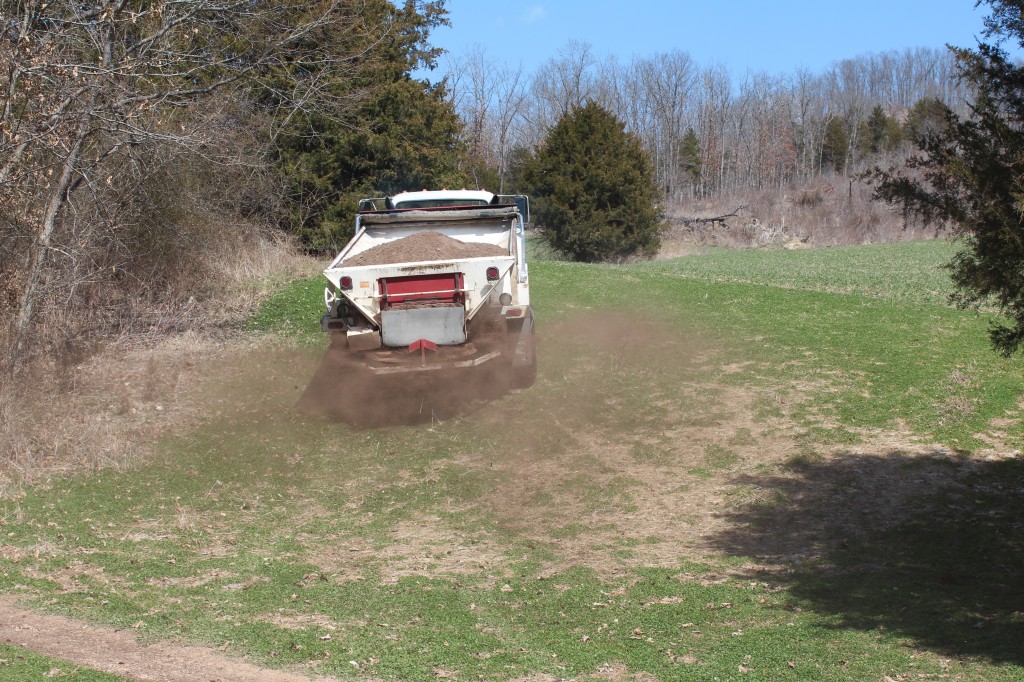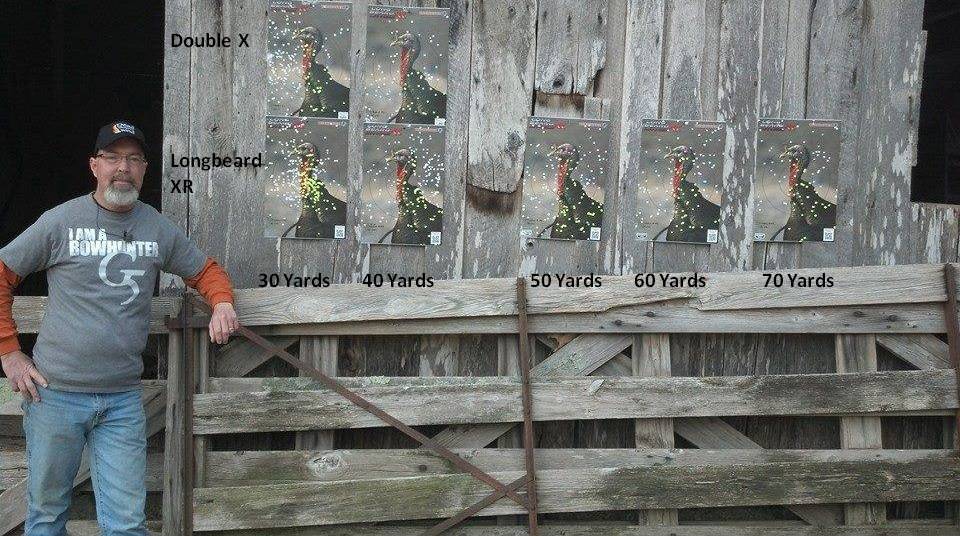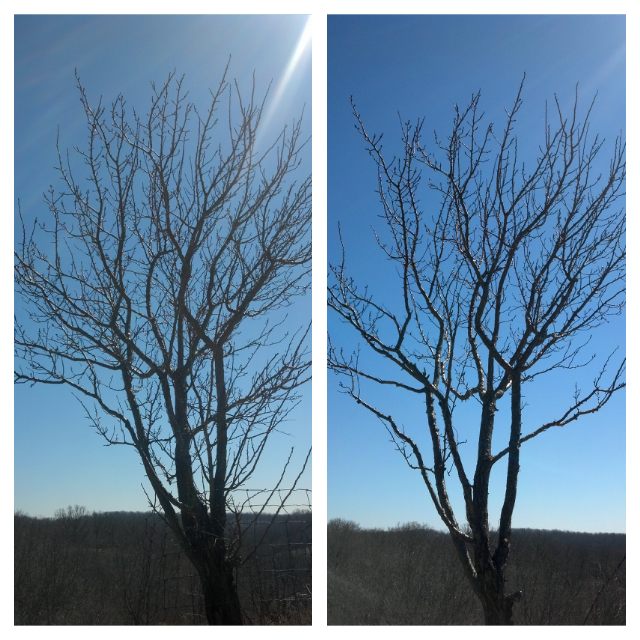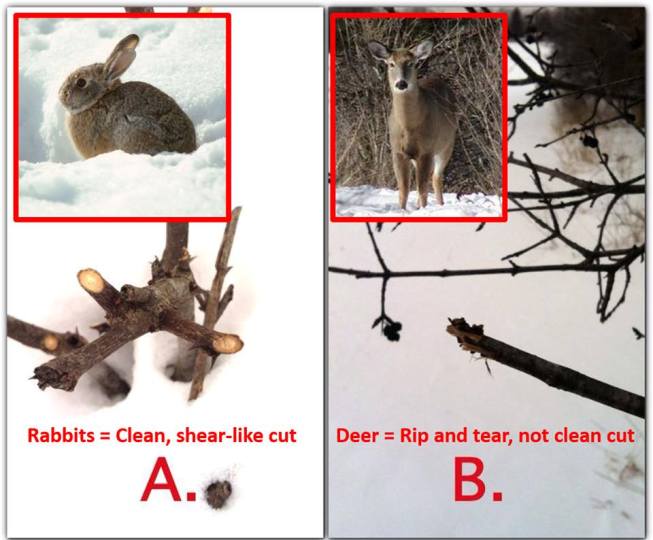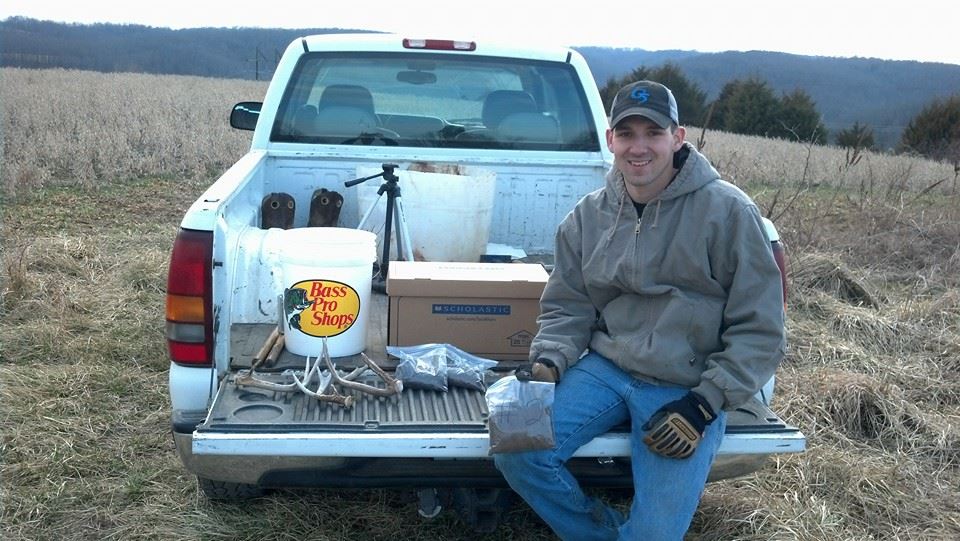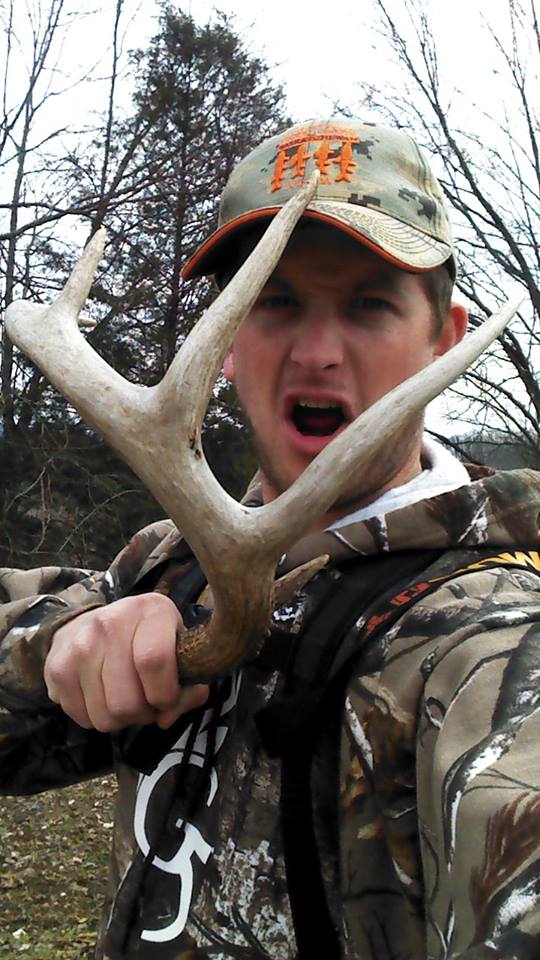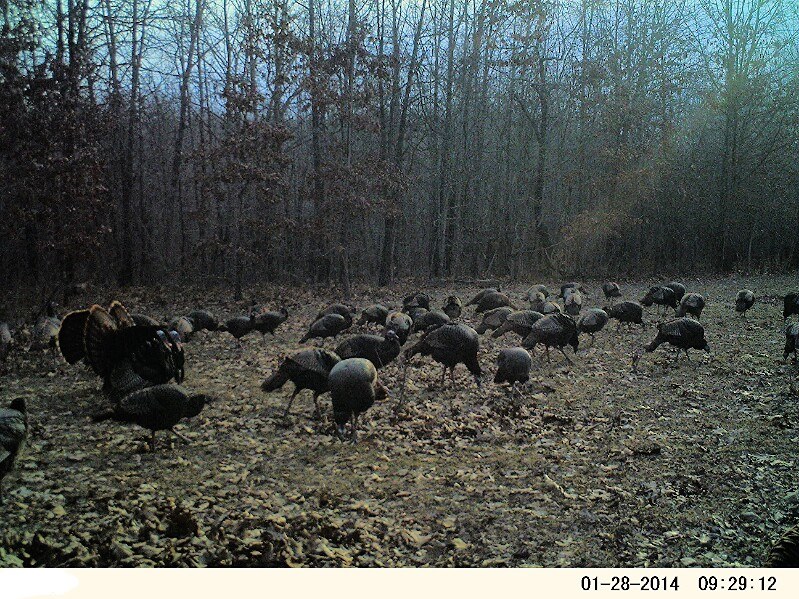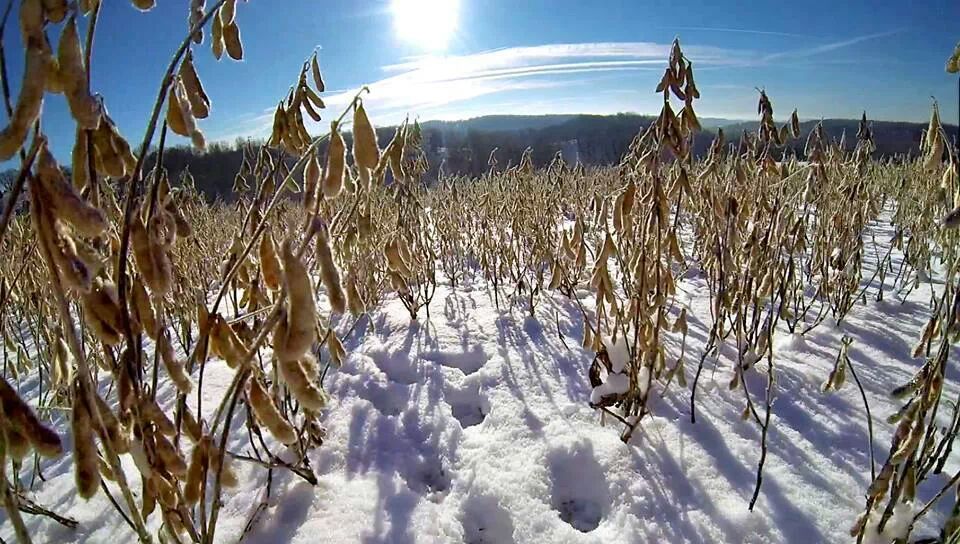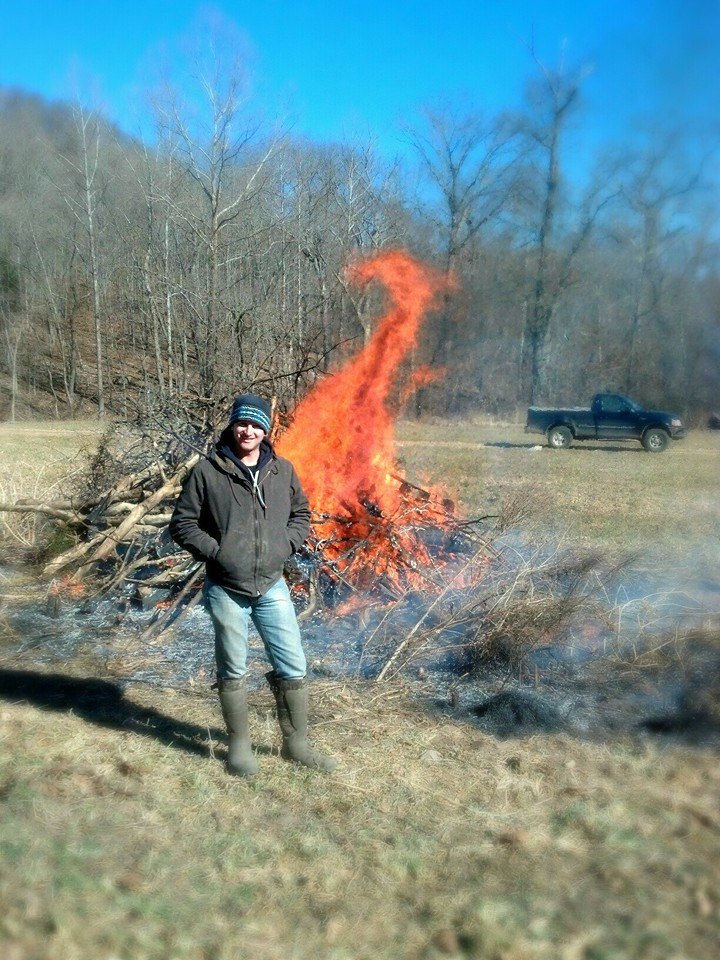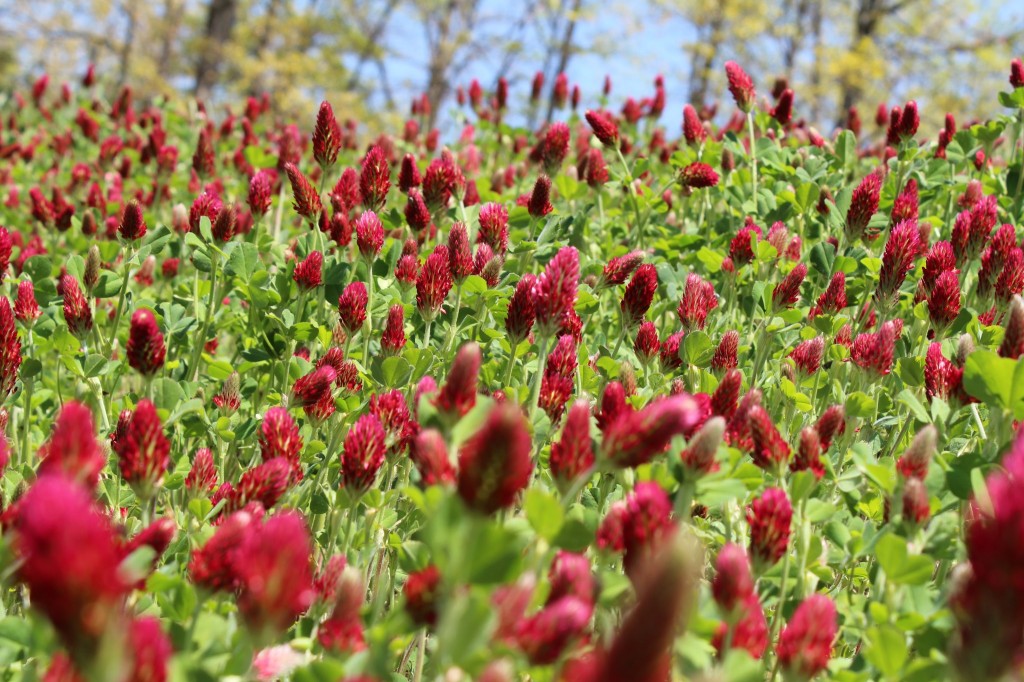Category: Hunting Blog
A Solid Foundation For Food Plots
On the latest episode of GrowingDeer.tv (watch GDTV #226 here) we displayed the results from our soil tests. The moment we got those results back to the office we added up how much Antler Dirt we needed and got it ordered. Warmer days are approaching quickly so we are hustling to get our food plots ready to plant.
Here in the Missouri Ozarks there isn’t much to work with as far as crop land is concerned. The soil is very shallow and in most cases very poor in nutrients. I touched on the importance of healthy soil in my blog, Quality Soil for Quality Antlers, a few weeks ago. I would like to reiterate how important healthy soil is to a deer management program. Healthy soil grows healthy plants. Plants are the medium that transfers the nutrients from the soil to the deer. Healthy plants not only transfer more nutrients to the deer, but they also taste better. Better tasting plants attract deer!
The Growing Deer Team believes very strongly that healthy soil is the solid foundation for a quality deer management program. We spent a whole day earlier this week getting Antler Dirt on the plots where it was needed. I hope you have a chance to get out this week and enjoy spring by improving your soil. The deer will thank you!
Chasing whitetails together,
Brian
Turkey Hunting: Testing The Gear
It’s always important to take some time before every turkey season and pattern your shotgun. This year was a little more exciting than usual for Grant and me. Our usual routine consists of packing up the Caldwell Lead Sled and Stable Table, throwing in our Winchester Double X’s and heading to the field to take a few shots. We typically expect the same results as we use the same gear from one year to the next. Lucky for us we had a couple boxes of the new Winchester Longbeard XR this year, and our excitement was almost more than we could bear!
Arriving at our usual location we unloaded our target and stepped back to thirty yards and setup our Stable Table and Lead Sled. First we wanted to fire off our usual Double X ammo and see the results. Next came the fun part, shooting the new Longbeard ammo! WOW! Both of these loads certainly provided enough power to take down a tom at 30 yards but there was definitely a difference in the two. Next, we stepped back to forty yards away and prepared for more shooting. After shooting both Double X and Longbeard XR at forty yards we were grinning from ear to ear. Of course both would kill a turkey at that distance, but it was still exciting to see how they were different in pellet amounts. Longbeard XR had our attention!! Always wanting to “find the ropes,” so to speak, Grant and I started backing our gear up for a fifty yard shot. In years past we wouldn’t push our luck at this distance when shooting at turkeys, but seeing the performance we were getting out of the new load we wanted to see the results. At fifty yards the pattern was still incredible! Over twenty pellets in the head and neck! Stepping it back ten more yards I waited with anticipation as Grant loaded the gun and took aim. Hearing the blast of the shotgun, I looked down range and was shocked to see that there wasn’t much difference at all between our fifty and sixty yard patterns. “Why not try seventy yards?” Grant asked. Moving back to seventy yards we discussed that we would not consider taking a shot at a turkey at that distance, but we both wanted to see the pattern. At seventy yards with Winchester Longbeard XR ammo we had 14 pellets in a turkey head target! 14!! Grant and I looked at that target in disbelief and excitement. “How is this even possible?” I asked him. We stood there smiling, and as if we needed anymore help getting excited for turkey season, we had it.
Patterning shotguns is always an important part of preparing for turkey season. I hope you take the time this spring to pattern your shotgun. Hopefully you have as much fun as Grant and I did!
Daydreaming of gobbling turkeys!
Adam
Fruit Tree Plots: Key For Early Season Whitetails
Across much of the whitetails’ range deer managers plant fruit tree plots. Fresh fruit is very attractive to deer and can be the key to tagging an early season bruiser. Just like any other food plot, fruit trees require care.
Fruit trees require pruning each year. Proper pruning allows fruit trees to produce more and better tasting fruit. It is important to wait as late into the dormant season as possible before pruning. The GrowingDeer team likes to watch the weather to ensure a warm day follows the day of pruning. A warm day allows the tree a day of growth to cover the wounds from pruning.
When pruning, cut any limbs that are not growing up at a 60-degree angle. A 60-degree angle is ideal for bearing the weight of fruit. It is also important to look for any limbs that are touching any other part of the tree. Rubbing limbs leave the tree scarred and exposed to disease. Trimming more is usually better than being conservative. Prune until there is a scaffolding like structure that allows sunlight to reach all parts of the tree.
It has been a rough winter, but hang in there – spring is close! If you are blessed with a warm sunny day take advantage by getting out there and showing those fruit trees some love.
Chasing Whitetails together,
Brian
Are Deer Eating Your Shrubs And Landscape Plants?
Obviously it has been a tough winter for a lot of people. There have been measurable amounts of snow across the nation throughout the winter and in a majority of the northern states there has been snow covering the ground for months now. This has brought up the topic of deer stress levels and what the deer are feeding on to survive.
I’ve seen several pictures of deer in suburbs and in yards eating shrubs and other decorative plants. Deer have been pushed to areas where they haven’t been all year because they have eaten all the forage available. As deer managers, it’s important to understand what your deer herd is consuming. During these late winter months Grant and I like to explore our food plots and areas with native browse and study the amount of food remaining and what their preference is. It’s also important to understand what exactly is feeding on these plants.
While you’re walking your property and examining the browse pressure you need to understand the difference in deer browse and other types of animal browse. Recently we posted a couple pictures on our facebook page asking our fans the difference between rabbit browse and deer browse. A lot of people were unsure about the difference between the two so I thought I’d explain it more here. The easiest way to tell the difference between the two is if the browse has been cut or torn. Deer don’t have incisors on their upper jaw. They bite on browse with their lower incisors and press against the roof of their mouth and tear off a bite. This results in frayed ends of browse when deer are the consumers. When the consumer is a rabbit, the food source will look like it was cut with a sharp edge, like a knife, as they have sharp incisors on both the lower and upper jaws.
Once you understand the difference between deer browse and rabbit browse you’ll better understand what’s eating your food on your hunting property.
Hopefully the winter weather gives you a break this week and you can get out and look for shed antlers!
Daydreaming of whitetails!
Adam
Quality Soil For Quality Antlers
Every deer manager wants to pull those trail cameras mid-summer and see giant velvet antlers. It is important to remember that quality antlers rarely come without hard work and intense habitat management. So where does a deer manager start?
Just like building a house, big antlers start with a solid foundation. In the deer world the “solid foundation” for antler growth is the soil. This is the time of year to take soil samples. Frequently we are asked how often soil samples need to be taken. Soil is of the utmost importance when managing for whitetails, so we take soil samples every year.
Adam and I spent a day earlier this week collecting soil samples from all the food plots at The Proving Grounds. Using a soil probe, we take several samples from one food plot and mix them in a CLEAN bucket. We then put the mixed sample into a pint size zip-lock bag and clearly label which plot it came from. Be very careful not to get your samples mixed up! Once you have collected soil from all the food plots, send it off to a lab for testing. A local university lab can test the samples or they can be sent to a private lab. The Growing Deer Team uses Waters Ag in Kentucky.
With the test results we know exactly what needs to be added to the soil to produce bigger antlers. Taking soil samples is a great way to improve wildlife habitat and an even better way to enjoy a beautiful day that the Lord has made! You might even find a shed or two!
Chasing whitetails together,
Brian
Frustrations And Celebrations Of Shed Hunting
I mentioned last week that I was getting cabin fever. That statement holds true for this week as well. February and the beginning weeks of March send me into a serious boredom. Hunting and trapping have ended here in Missouri and turkey season, along with the best fishing days, are weeks and even months away. With all this being said, there is one thing that a guy can pursue to try and relieve his cabin fever: shed hunting!
By this time of year here in the Midwest, a lot of bucks have shed their antlers. It’s always an enjoyment to monitor the Reconyx cameras and see when most of the bucks have started shedding their antlers. As soon as we see that the majority of bucks have shed their antlers, we head to the woods to try and find them! Unfortunately, finding these antlers can be very difficult, excluding the areas of large crop fields like Iowa and Illinois. Growing up in the Ozark Mountains, I’ve found less than twenty sheds my entire life. While I attended college my brother and I would head to Kansas every spring and chase turkeys. Just in those few days every spring, we found more sheds than our entire lives in the Ozark Mountains. What was the difference you ask? FOOD! FOOD! And more FOOD!
Obviously the winter months are cold, and like this year, there can be lots of snow. These conditions push deer to food sources. A deer has only one option to survive the arctic temperatures of winter, and that’s to eat. By consuming food they will increase their body temperature so they can survive the cold days of winter. While deer are focused on feeding to survive, they’re making our job as shed hunters easier. With the deer confined to smaller areas of feeding and bedding, they’re shrinking the circle in which they’ll drop their antlers in. Locating that food source is what we struggle with here in the Ozark Mountains. That food source might be a half acre food plot or a five hundred acre forest with acorns. Lucky for me, Magellan, a 4.5 year old buck here at The Proving Grounds decided this week that the food source of choice was a food plot planted in Eagle Seed Broadside blend. While doing some work beside this food plot I was keeping my eyes peeled for sheds and found his left antler laying ten yards from the edge of the woods. Bingo! It’s always exciting finding sheds but it’s even more rewarding finding them in the Ozark Mountains! They come with such rarity that it’s such a reward!
This find illustrates my main point even further. Once we’ve reached the latter part of the winter months, deer will be concentrated more heavily on food sources. That’s exactly where you’ll find me while I’m searching for those mysterious antlers that haunt our dreams.
Get out this week and help your cabin fever by doing a little shed hunting! We love seeing those pictures with smiling faces holding shed antlers on our Facebook page! Be sure to share them with us!
Daydreaming of whitetails,
Adam
Finding The Flock: Using Trail Cameras For Early Scouting
It’s mid February and for a lot of guys like me, that means cabin fever. Deer season has been closed for awhile now for most of us and the boredom has started setting in! This time of year bores the socks off me and a lot of other people. The only hunting activities we can really get involved in are shed hunting and predator hunting. If you’re anything like me, you’ll usually bury your head in a turkey hunting magazine and dream about the warmer temperatures of spring and all the great activities associated with it.
One important thing I do to prepare for those days is keep my Reconyx cameras out and monitoring the turkeys. Locating the turkeys this time of year shouldn’t be a problem for anyone. Find the food, find the turkeys. To make things even easier, this time of year turkeys are usually grouped up in large flocks and could even reach numbers in the hundreds! We’ve received several pictures recently of these type of flocks and have shared them with you on our Facebook page. Many of you have asked questions about why the turkeys are in such big numbers and if they will stay like this until turkey season gets here.
During the summer and fall the turkeys will usually be in smaller flocks, mostly hens with this year’s young and other flocks of mostly males. As the winter progresses these smaller flocks will start frequenting the same food sources and by this time of year they’ve combined to make larger flocks. At this stage of the year they are sorting out dominance. The toms will spend a great deal of their time in “strut” trying to display that they are “The MAN!” Observing these flocks can be very entertaining! The hens are going about their business trying to eat and survive the winter, while the toms are fighting, strutting, and doing everything in their power to become “The Man.” Once they’ve established their pecking order and the spring progresses, they will begin to breakup in smaller flocks and begin their breeding season.
It’s always a fun time of year to watch the spring approach and the turkeys begin their ritual! Preparation for turkey season begins now, so be sure to get those cameras out and find the flocks and watch it all unfold!
Daydreaming of long spurs and gobbling turkeys,
Adam
Managing Whitetails: The Best Food Plots For A Cold Winter
If you look outside today in Branson, Missouri you’ll see a blanket of snow. We received 4 inches of snow Sunday and a few more inches Tuesday. This winter has certainly broken the trend set over the last few years. We have had numerous snowstorms that have left southern Missouri covered with snow. There are areas of the country that have received much more snow than we have!
Winters like these can be very stressful on wildlife. With a good portion of an animal’s food source covered with snow they have to resort to browsing on food sources above snow level or digging through the snow for food. Recently Grant and I took a walk to try and learn more about what our food plots were providing during the snow.
As we approached the food plot of standing beans you could obviously see the bean pods above the snow, with several deer tracks around. The deer had found the beans and were using them as a food source. Next, Grant and I stepped into a part of the food plot that was only wheat. The only thing you could see of the wheat was the very tip of the wheat which was covered in ice. Looking at this we also noticed there were not very many deer tracks in this section of the field. Probably because the deer would have to dig in the snow for food, while a better source of carbohydrates could be found not far away with the soybeans. Next, we moved to a section of the field that was planted in Eagle Seed Broadside blend. There were deer tracks in this part of the field but certainly not the amount of sign that was in the 100% bean field.
After all this walking around we pieced the information together to see what we could learn from these observations. First, on snow covered days the standing beans are hands down the most attractive thing we have provided. Second, a field of straight wheat isn’t going to provide much forage for deer when there are multiple inches of snow on the ground, although wheat can still be a great attractant when there isn’t snow. Finally, when considering the entire hunting season a food plot that provides both greens and standing beans can have the greatest attraction for deer. By planting Eagle Seed beans in the spring and then drilling back through them in the fall with the Eagle Seed Broadside blend we have the best combination food source that I have ever laid eyes on – a food plot that can provide year round forage and the most ideal forage during hunting season.
Daydreaming of whitetails,
Adam
Late Winter Habitat Management: Burning Brush Piles
Brian wrote about burning up our debris piles in his blog last week. We took that one step further this week. Not only did we burn up debris piles from past storms but we also burned dozer decks. These dozer decks have laid next to our food plots for a few years with the goal of drying out. Once they reached a point of being dry we could burn them and remove over 90% of the pile. That’s exactly what we did this week!
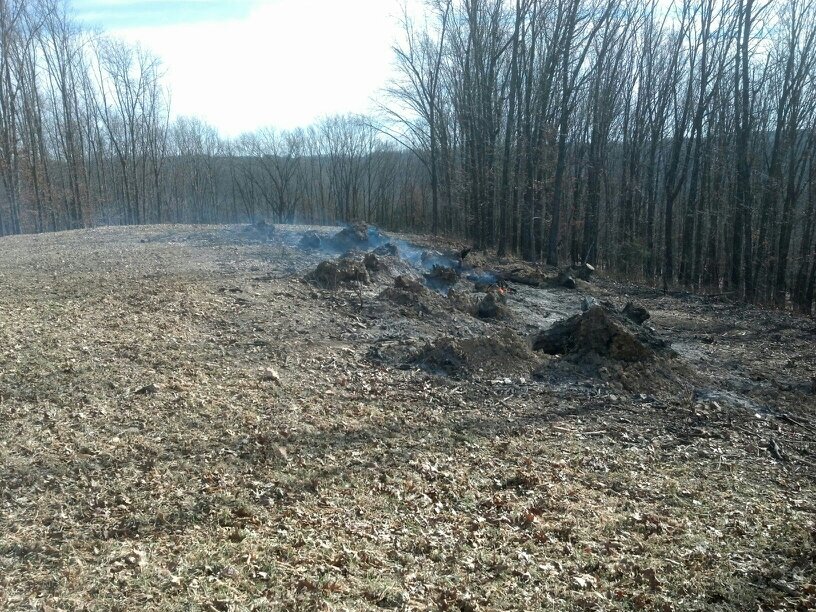
One of the dozer decks after being burned. Once the stumps are pushed away it will be ready to plant.
During these last few years the piles have only provided housing to the local groundhogs and snakes, irritation for the tractor operator when trying to plant, and the overall worst thing, obstructed views when trying to hunt.
All of these have been a nagging element when waiting for them to dry out. Finally, this winter, we decided they had dried enough to burn. We didn’t receive the average amount of rain throughout the growing season when our beans were trying to survive. After we add the groundhog variable on top of that, our beans took a hurting! After debating whether to burn or not everyone at GrowingDeer.tv came to the same answer, Burn Baby Burn!
Once they’re burned, we’re only left with root wads that will be pushed off out of the way permanently! We now have open areas that will be great for planting, which is exactly what our goal is. Now that all our work is finished removing the piles, the bare ground is a perfect site to plant clover or even expand our food plot more for Eagle Seed soybeans. We’re turning the calendar from January to February soon so we have some time to decide what we’ll plant. Be sure to follow GrowingDeer.tv to see what we decide to plant and when we do it! As always thanks for the support and good luck on all your off season management projects!
Daydreaming of long beards and long spurs together,
Adam
Habitat Management For Whitetails In Late Winter
For me this time of year is a test of mental strength. Deer season is over and cabin fever sets in. The occasional warmth of a sixty degree day brings on thoughts of chasing long spurred gobblers. A bone chilling cold front quickly snaps us back to reality. There is work to be done.
This is the perfect time of year to get projects accomplished that would otherwise be hindered by pests like snakes and ticks. Those pesky debris piles left over from last summer’s storms can be piled up and burnt without fear of uncovering a venomous snake. More importantly, those clearings that we have wanted to turn into clover plots can be cleared without getting covered in ticks.
If you are like us there are always those few areas that have been overtaken by saplings before you can establish a good clover food plot. We spent some time this week mapping out those areas and clearing out those saplings before things get grown up with the warmth of the spring sunshine. It is the perfect time to evaluate the amount of clover seed that you are going to need before frost seeding. Ideally you have your seed on hand and your clover plots ready for seeding.
The GrowingDeer.tv team will be preparing our clover plots and watching the weather. When the forecast indicates that there are approximately four frosts left we will begin frost seeding clover. The freezing and thawing action of early spring will lead to great seed to soil contact. Before we know it we will be enjoying beautiful blooming clover and strutting gobblers. In the meantime we will be working hard to better The Proving Grounds. I hope you have a chance to get out and do the same to your property.
Chasing whitetails together,
Brian



